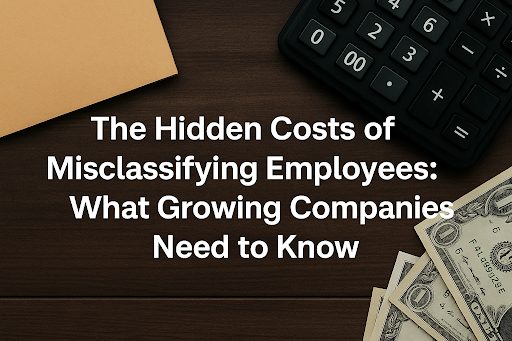The Hidden Costs of Employee Misclassification for Growing Businesses

Summary
Full Article
Employee misclassification represents one of the most significant risks facing growing businesses, with potentially devastating financial and legal consequences. This practice occurs when companies incorrectly classify employees as independent contractors, a distinction that carries substantial implications for worker protections and employer responsibilities.
The fundamental difference between employees and independent contractors lies in the legal relationship and associated obligations. Independent contractors operate as self-employed individuals working with a company rather than for it, while employees receive specific legal protections and benefits. This distinction becomes particularly crucial for small businesses expanding their workforce, where the temptation to classify workers as contractors for cost-saving purposes can lead to severe legal repercussions.
The financial incentives for misclassification are substantial but come with significant legal risks. Classifying workers as independent contractors eliminates employer obligations for minimum wage requirements, workers' compensation, medical benefits, and overtime pay. However, this cost-saving measure violates employment laws and exposes companies to penalties from multiple government agencies simultaneously. The Internal Revenue Service, Department of Labor, and state labor departments can all impose separate financial penalties for misclassification violations.
Legal complexity compounds the risk for businesses operating across multiple jurisdictions. While federal guidelines provide one framework for classification, state-level regulations often differ substantially. California, for example, operates under the presumption that all workers are employees unless they meet specific criteria outlined in the ABC test. This three-part test requires proving that workers operate free from company control, perform work outside the usual course of business, and maintain independent businesses in their trade.
The consequences of misclassification extend beyond immediate financial penalties. Companies face substantial legal fees, lost productivity during investigations, and significant administrative strain. The combined impact of penalties from multiple agencies can create financial burdens that threaten business viability, particularly for small and growing companies operating with limited resources.
Proactive compliance measures provide the most effective defense against misclassification risks. Regular audits of employment classifications help identify potential issues before they escalate into legal problems. Clear documentation practices and separate onboarding processes for employees and contractors establish essential paper trails that demonstrate proper classification. Training for supervisors and managers ensures consistent understanding and application of classification standards across the organization.
Administrative systems must account for different worker classifications to minimize inadvertent violations. Maintaining distinct records for contractors and employees, even when they perform similar roles, helps demonstrate compliance during potential audits. Centralized documentation systems that clearly differentiate between employment types provide crucial evidence of proper classification practices.
The operational impact of misclassification extends to workforce management and company reputation. Proper classification ensures workers receive appropriate protections and benefits, contributing to employee satisfaction and retention. For growing companies, establishing compliant employment practices from the outset creates a foundation for sustainable expansion while avoiding the substantial risks associated with misclassification.

This story is based on an article that was registered on the blockchain. The original source content used for this article is located at citybiz
Article Control ID: 270044